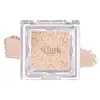What's inside
What's inside
 Key Ingredients
Key Ingredients

 Benefits
Benefits

 Concerns
Concerns

 Ingredients Side-by-side
Ingredients Side-by-side

Polyglyceryl-2 Triisostearate
EmulsifyingTriethylhexanoin
MaskingMagnesium/Potassium/Silicon/Fluoride/Hydroxide/Oxide
Stearic Acid
CleansingZinc Myristate
Hdi/Trimethylol Hexyllactone Crosspolymer
Pentylene Glycol
Skin ConditioningBis-Diglyceryl Polyacyladipate-2
EmollientPhenoxyethanol
PreservativeHydrogen Dimethicone
Methylparaben
PreservativeSilica
AbrasiveTocopherol
AntioxidantButylene Glycol
HumectantWater
Skin ConditioningSodium Hyaluronate
HumectantAnthemis Nobilis Flower Extract
MaskingLavandula Angustifolia Flower Extract
CleansingRosmarinus Officinalis Leaf Extract
AntimicrobialTalc
AbrasiveMica
Cosmetic ColorantTitanium Dioxide
Cosmetic ColorantCI 77492
Cosmetic ColorantTin Oxide
AbrasiveAluminum Hydroxide
EmollientPolyglyceryl-2 Triisostearate, Triethylhexanoin, Magnesium/Potassium/Silicon/Fluoride/Hydroxide/Oxide, Stearic Acid, Zinc Myristate, Hdi/Trimethylol Hexyllactone Crosspolymer, Pentylene Glycol, Bis-Diglyceryl Polyacyladipate-2, Phenoxyethanol, Hydrogen Dimethicone, Methylparaben, Silica, Tocopherol, Butylene Glycol, Water, Sodium Hyaluronate, Anthemis Nobilis Flower Extract, Lavandula Angustifolia Flower Extract, Rosmarinus Officinalis Leaf Extract, Talc, Mica, Titanium Dioxide, CI 77492, Tin Oxide, Aluminum Hydroxide
Synthetic Fluorphlogopite
CI 77891
Cosmetic ColorantMica
Cosmetic ColorantHdi/Trimethylol Hexyllactone Crosspolymer
Silica
AbrasiveDicalcium Phosphate
AbrasiveDimethicone
EmollientCI 77491
Cosmetic ColorantGlycerin
HumectantTriethoxycaprylylsilane
Isopropyl Palmitate
EmollientMagnesium Aluminum Silicate
AbsorbentPentylene Glycol
Skin ConditioningMagnesium Myristate
Polysorbate 20
EmulsifyingOctyldodecyl Stearoyl Stearate
EmollientAcrylamide/Sodium Acryloyldimethyltaurate Copolymer
Emulsion StabilisingSorbitan Olivate
EmulsifyingSorbitan Stearate
EmulsifyingIsohexadecane
EmollientEthylhexylglycerin
Skin ConditioningPolysorbate 80
EmulsifyingSorbitan Oleate
EmulsifyingTocopherol
AntioxidantSodium Dehydroacetate
PreservativePhenoxyethanol
PreservativePotassium Sorbate
PreservativeSynthetic Fluorphlogopite, CI 77891, Mica, Hdi/Trimethylol Hexyllactone Crosspolymer, Silica, Dicalcium Phosphate, Dimethicone, CI 77491, Glycerin, Triethoxycaprylylsilane, Isopropyl Palmitate, Magnesium Aluminum Silicate, Pentylene Glycol, Magnesium Myristate, Polysorbate 20, Octyldodecyl Stearoyl Stearate, Acrylamide/Sodium Acryloyldimethyltaurate Copolymer, Sorbitan Olivate, Sorbitan Stearate, Isohexadecane, Ethylhexylglycerin, Polysorbate 80, Sorbitan Oleate, Tocopherol, Sodium Dehydroacetate, Phenoxyethanol, Potassium Sorbate
Ingredients Explained
These ingredients are found in both products.
Ingredients higher up in an ingredient list are typically present in a larger amount.
This ingredient is a powder used to improve texture, slip, and give products a silky texture.
Mica is a naturally occurring mineral used to add shimmer and color in cosmetics. It can also help improve the texture of a product or give it an opaque, white/silver color.
Serecite is the name for very fine but ragged grains of mica.
This ingredient is often coated with metal oxides like titanium dioxide. Trace amounts of heavy metals may be found in mica, but these metals are not harmful in our personal products.
Mica has been used since prehistoric times throughout the world. Ancient Egyptian, Indian, Greek, Roman, Aztec, and Chinese civilizations have used mica.
Learn more about MicaPentylene glycol is typically used within a product to thicken it. It also adds a smooth, soft, and moisturizing feel to the product. It is naturally found in plants such as sugar beets.
The hydrophilic trait of Pentylene Glycol makes it a humectant. As a humectant, Pentylene Glycol helps draw moisture from the air to your skin. This can help keep your skin hydrated.
This property also makes Pentylene Glycol a great texture enhancer. It can also help thicken or stabilize a product.
Pentylene Glycol also acts as a mild preservative and helps to keep a product microbe-free.
Some people may experience mild eye and skin irritation from Pentylene Glycol. We always recommend speaking with a professional about using this ingredient in your routine.
Pentylene Glycol has a low molecular weight and is part of the 1,2-glycol family.
Learn more about Pentylene GlycolPhenoxyethanol is a preservative that has germicide, antimicrobial, and aromatic properties. Studies show that phenoxyethanol can prevent microbial growth. By itself, it has a scent that is similar to that of a rose.
It's often used in formulations along with Caprylyl Glycol to preserve the shelf life of products.
Silica, also known as silicon dioxide, is a naturally occurring mineral. It is used as a fine, spherical, and porous powder in cosmetics.
Though it has exfoliant properties, the function of silica varies depending on the product.
The unique structure of silica enhances the spreadability and adds smoothness, making it a great texture enhancer.
It is also used as an active carrier, emulsifier, and mattifier due to its ability to absorb excess oil.
In some products, tiny microneedles called spicules are made from silica or hydrolyzed sponge. When you rub them in, they lightly polish away dead skin layers and enhance the penetration of active ingredients.
Learn more about SilicaTocopherol (also known as Vitamin E) is a common antioxidant used to help protect the skin from free-radicals and strengthen the skin barrier. It's also fat soluble - this means our skin is great at absorbing it.
Vitamin E also helps keep your natural skin lipids healthy. Your lipid skin barrier naturally consists of lipids, ceramides, and fatty acids. Vitamin E offers extra protection for your skin’s lipid barrier, keeping your skin healthy and nourished.
Another benefit is a bit of UV protection. Vitamin E helps reduce the damage caused by UVB rays. (It should not replace your sunscreen). Combining it with Vitamin C can decrease sunburned cells and hyperpigmentation after UV exposure.
You might have noticed Vitamin E + C often paired together. This is because it is great at stabilizing Vitamin C. Using the two together helps increase the effectiveness of both ingredients.
There are often claims that Vitamin E can reduce/prevent scarring, but these claims haven't been confirmed by scientific research.
Learn more about Tocopherol